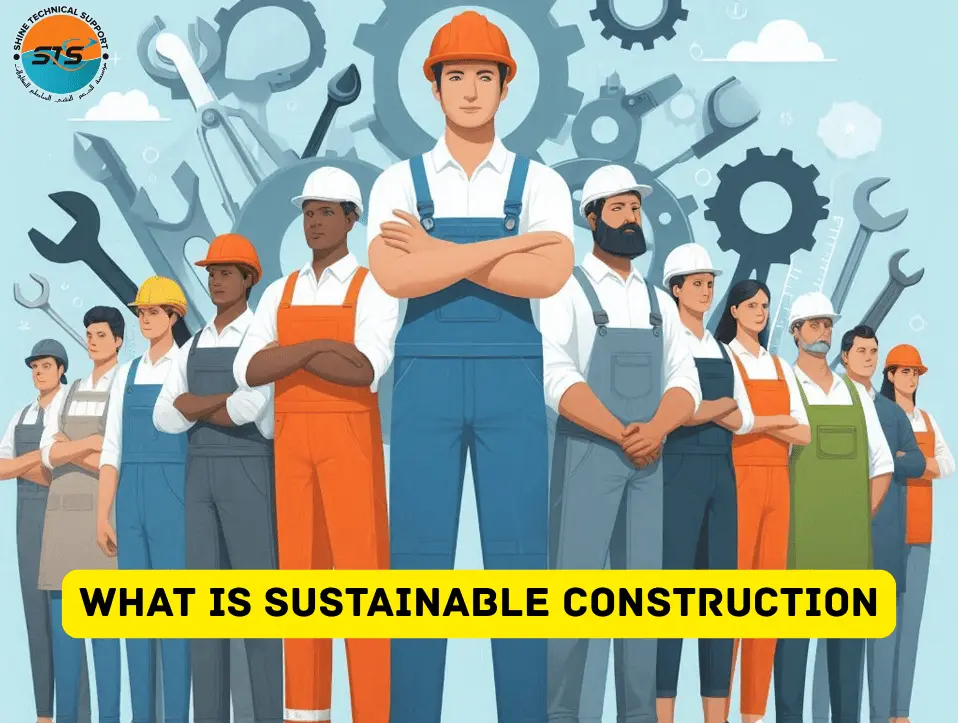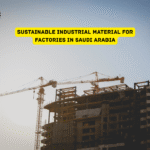In an era defined by climate change, rapid urbanization, and environmental degradation, the concept of sustainable construction has become more than just a trend, it’s a necessity. Across the globe, the construction industry is responsible for nearly 40% of total CO₂ emissions and 30% of natural resource consumption.
For a company like STS GCC, a leader in industrial and infrastructure development in Saudi Arabia and the GCC, understanding and implementing sustainable construction practices is critical to shaping a future that is resilient, efficient, and eco-friendly.
But what exactly does “sustainable construction” mean, and how does it transform the way we design, build, and maintain our built environment? Let’s explore in detail.
What Is Sustainable Construction?
Sustainable construction refers to the planning, design, construction, operation, and deconstruction of buildings or infrastructure in a manner that minimizes environmental impact, optimizes resource use, and creates long-term social and economic value.
It goes beyond just using “green materials” — it’s a holistic approach that considers the entire lifecycle of a building, from the initial site selection to post-occupancy maintenance.
In essence, sustainable construction is about building today without compromising tomorrow.
Core Principles of Sustainable Construction
To understand sustainable construction deeply, it’s essential to know the five foundational principles that define it:
1. Energy Efficiency
Energy efficiency is at the heart of sustainable construction. Buildings that consume less energy not only reduce operating costs but also help lower greenhouse gas emissions.
This can be achieved through:
- Smart building orientation and natural ventilation
- High-performance insulation and glazing
- Integration of renewable energy systems (solar, wind, geothermal)
- Advanced HVAC and lighting systems
2. Resource Optimization
Sustainable construction emphasizes the use of renewable, recyclable, and low-impact materials. For example:
- Using recycled steel, fly ash, and bamboo instead of high-carbon materials
- Sourcing local materials to reduce transportation emissions
- Minimizing waste through modular design and prefabrication
3. Environmental Protection
Every construction project impacts its surrounding ecosystem. Sustainable practices include:
- Minimizing land disruption and preserving biodiversity
- Preventing soil erosion and water pollution
- Efficient waste management and recycling on-site
4. Economic Viability
Sustainability doesn’t mean more cost, it means better value.
Although the upfront cost of green construction can be slightly higher, long-term savings from reduced energy use, lower maintenance, and improved asset value far outweigh the initial investment.
5. Social Well-being
Sustainable construction also focuses on human health and community welfare.
This includes:
- Designing buildings with natural light, clean air, and comfortable temperatures
- Creating safe working conditions for construction workers
- Promoting inclusive, accessible, and affordable housing and infrastructure
Why Sustainable Construction Matters in 2025
As the world transitions toward net-zero emissions, the construction industry stands at a pivotal point. Governments, investors, and clients are increasingly demanding eco-conscious building practices.
For regions like Saudi Arabia, Bahrain, and the wider GCC, sustainability has become central to Vision 2030, which emphasizes environmental stewardship and green urbanization.
Key Reasons Sustainable Construction Matters:
Environmental Responsibility: Reduces pollution, deforestation, and carbon footprint.
Economic Efficiency: Cuts operational and maintenance costs.
Health & Well-being: Improves indoor environments for occupants.
Regulatory Compliance: Aligns with new building codes and green certification programs.
Brand Reputation: Positions companies like STS GCC as forward-thinking leaders in sustainable innovation.
Sustainable Construction Techniques and Innovations
Modern construction has evolved far beyond traditional methods. Here are key sustainable techniques transforming the industry in 2025:
1. Green Building Materials
Materials like recycled concrete, cross-laminated timber (CLT), low-VOC paints, and biodegradable composites are replacing conventional, high-emission materials.
These materials reduce waste, enhance building performance, and improve energy retention.
2. Smart Building Systems
With the integration of IoT (Internet of Things), AI, and Building Information Modeling (BIM), sustainable construction now relies heavily on data-driven efficiency.
These systems enable:
- Real-time energy monitoring
- Predictive maintenance
- Smart lighting and temperature control
3. Water Conservation Methods
Water-efficient plumbing, rainwater harvesting, and greywater recycling systems are being widely adopted to conserve resources, especially in arid regions like the GCC.
4. Renewable Energy Integration
Solar panels, wind turbines, and geothermal systems are being installed directly into building designs, turning them into self-sustaining energy producers.
5. Modular and Prefabricated Construction
Prefabrication reduces on-site waste, speeds up project delivery, and ensures high precision. It’s one of the most efficient methods in sustainable construction.
Sustainable Construction and the GCC Vision 2030
The Gulf region, particularly Saudi Arabia, has made sustainability a cornerstone of its national strategy. Under Vision 2030, massive infrastructure and urban development projects are being reimagined through an eco-conscious lens.
How STS GCC Supports Vision 2030
STS GCC, as a key player in the regional construction sector, actively aligns its projects with green building standards and the best environmental practices.
From energy-efficient industrial complexes to smart infrastructure, STS GCC integrates sustainable methodologies to meet environmental, economic, and social goals.
Benefits of Sustainable Construction
Sustainable construction offers multi-dimensional benefits, not only to the planet but also to businesses and communities.
1. Environmental Benefits
- Reduces CO₂ emissions and pollution
- Protects natural habitats and biodiversity
- Enhances waste management and recycling
2. Economic Benefits
- Lowers operational and maintenance costs
- Increases property value and investment appeal
- Improves long-term ROI for developers and owners
3. Social Benefits
- Promotes better indoor air quality and natural lighting
- Enhances worker and occupant health
- Builds resilient and inclusive communities
STS GCC Role in Promoting Sustainable Construction
At STS GCC, sustainability is not just an initiative, it’s a commitment.
As a leading construction and industrial material supplier in Saudi Arabia, STS GCC integrates sustainable practices across every project phase, from design to delivery.
Our Sustainability Commitments Include:
- Using eco-friendly and recyclable building materials.
- Implementing waste reduction and efficient resource management.
- Supporting green certifications and compliance with Vision 2030 targets.
- Partnering with technology providers to promote smart and sustainable construction systems.
STS GCC continues to pioneer in areas like energy-efficient project design, smart infrastructure development, and green supply chain management, ensuring that each project contributes to a cleaner, safer, and more sustainable future.
Conclusion: Building a Sustainable Tomorrow with STS GCC
Sustainable construction is not just about “building green”, it’s about rethinking how we build, operate, and sustain our cities and industries.
At STS GCC, we are proud to be part of this transformation, combining innovation, responsibility, and resilience to shape the next generation of sustainable infrastructure in the GCC.
By embracing sustainable construction, we’re not only reducing environmental impact but also creating a legacy of progress, opportunity, and balance for generations to come.
Together, let’s build a future where growth meets responsibility, where every project stands as a symbol of sustainability, efficiency, and hope.








1 Comment
backlinko social media
November 25, 2025I am forever thought about this, thankyou for putting up.